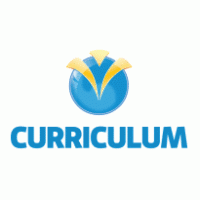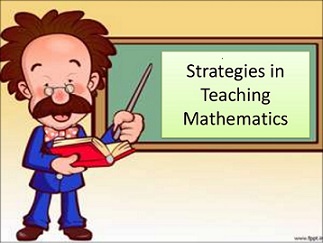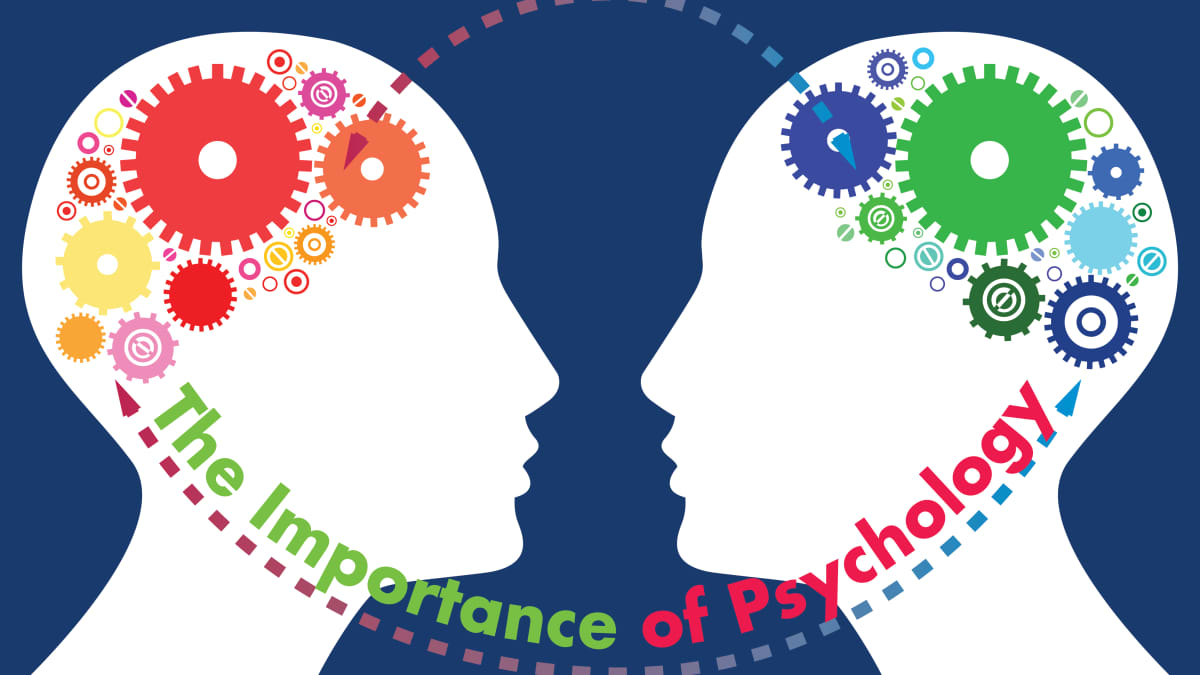| |
- Teacher: Ambrose Bagnia
| |
My Dear Prospective Student of this University of Excellence, this is a mature entrance exams for
applicants who applied for Bachelor of Science in Biological Sciences Education (B.Sc. Biol. Sci. Edu.). You are expected to answer all the questions provided.


Course Objectives: By the end of the semester, the learners will be able to;
1. Demonstrate knowledge and understanding of basic concepts of data communications, and computer networking.
1.1 Explain concepts of data communication and computer networks.
2. Demonstrate knowledge and understanding of the different networking components and their respective roles in a computer communication system.
2.1 Explain specific hardware and software requirement for particular communication types.
3. Apply the concepts of configuration of networking devices.
3.1 Configure and send data from one personal computer to another.
3.2 Connect a PC to access the Internet.
Date | Units | Topic |
| 1 | Introduction to Data Communications and Networking. |
| 2 | Transmission Media |
| 3 | Network Fundamentals |
| 4 | The Internet |
| 5 | The World Wide Web |
| 6 | Mid Semester Examination |
Instructional resources | 7 | i. Smartphones, ii. Laptops, iii. Desktop computers, iv. Tablets v. TV and Radio, vi. Open Educational Resources (Including: YouTube, MOOCS-Udemy/ coursera, khan academy, TESSA), vii. The iBox (CENDLOS) viii. Subject based application software Instructional Laboratories (with multimedia equipment and smartboards)
|
| 9 | End of Semester Examinations |
Assessment
Class Participation/Online Survey- 5%
Daily Group Journal- 5%
Group Project- 10%
Mid-term Test- 20%
End of Semester Examination- 60%
REFERENCES
Stallings, W. (2013). Data and computer communications, (10th ed.), Prentice Hill,.
Kurose, J., Ross, K., Computer Networking: A top-Down Approach, 6th Edition, Peason, 2012.
Brookshear, J. G. & Brylow, D. (2015). Computer science: an Overview (12th ad), Harlow Essex, England: Pearson.
Forouzan, B., (2012) Data Communication and Networking, 5th Edition. McGraw-Hill,
Comer, D. (2006). Internetworking with TCP/IP, Volume I: Principles, Protocols, and Architecture. Upper Saddle River, NJ: Prentice Hall,
Freeman, R. (2005).Fundamentals of telecommunications. New York:Wiley,
Tanenbaum, A. S. (2003). Computer networks (4/e), Prentice Hall,.
Selected articles and online resources (youtube.com, MOOCs: Khan Academy, TESSA, Udemy etc.)

This course is meant to help students design and use instructional media and technologies for learning to facilitate the delivery of instruction/teaching in education and training contexts. It exposes students to various types of instructional media and helps them to understand the principles, methods and techniques for designing and using instructional media and technology systematically in education and training settings.
By the end of the course student will be able to design and use instructional media effectively in his/her teaching.

The course is designed to develop student-teachers’ competencies in developing the required teaching skills, attitudes and knowledge in their specified subjects. Students will be exposed to the principles, concepts, and subject-specific methods and techniques required for the effective teaching in the various disciplines and at the various levels of the education system. Each course shall have a micro teaching session designed to equip students with hands-on skills, attitudes and the pedagogical content knowledge of the various disciplines.

nnnnnnnnnnnnnnnnnnnnnnnnnnnnnnnnnnnnnnnnnnnnnnnnnnnnnn

This course introduces you to the school management process

The objective of the course is to teach students the tools and techniques for making engineering drawings. By the end of the course, students should gain practical knowledge of basic technical drawing as well as comprehending electrical and electronic drawings.
The course is in two parts: part 1 involves an introduction to the basics of technical drawing skills for drawing basic geometric shapes and graphical projection techniques. In the second part, the course stresses on the development of skills in preparing and interpreting basic electrical engineering drawings. Emphasis will be on industrial power and control applications. Computer-Aided Drafting methods will be used to prepare the drawings.


The course focuses on hospitality operations. The course is also intended to equip students to understand and develop an understanding of the hospitality industry and its development, the organization of the various sectors within it and their management structure.

This Course engages students in critical thinking and analysis of ways in which they can make their information technology classes engaging and student-oriented. It provides opportunities for students to acquire the skills and knowledge needed to teach Information Technology courses at pre-tertiary levels effectively.
Department of Information Technology Education – AAMUSTED
ITC 364 Application of Information Technology in Education
Semester Two (May 2024)
Lecturer: Adasa Nkrumah K. F., PhD
Office: ADB10, FASME Block
This course is designed to expose students to the current trends in information technology in education. The concept of integrating technology into teaching and learning will be explored, with particular emphasis on the TPACK framework. Areas of application in administration and teaching/learning will be discussed.
Kolb, L., (2017). Learning First, Technology Second: The Educator’s Guide to Designing Authentic Lessons. International Society for Technology in Education.
Picciano, A. G., (2011), Educational Leadership and Planning for Technology 5th Edition. Education, NY. (referred to as PAG in this course)
Ashcroft, K., & Foreman-Peck, L. (1994). Managing Teaching and Learning in Further and Higher Education. Routledge
Khirwadkar, A. (2005). Information and Communications Technology in Education. Sarup & Sons. New Delhi.
Maddux, C. D. & LaMont Johnson, D. (2006). Type II Uses of Technology in Education: Projects, Case Studies, and Software Applications. Haworth Press.
Petrides, L. A (2000). Case Studies on Information Technology in Higher Education:
The course will be taught using lecture, demonstration, and collaboration methods. Where possible, use a hybrid delivery method (traditional classroom & online), and students will be expected to be actively engaged in both delivery systems.
AAMUSTED LMS
· Regular class attendance
· Complete all reading assignments
· Complete a group presentation in class
· Pass one quiz
· Pass an end of semester examination
Description | Points |
Class Attendance | 10 |
Quiz | 20 |
Group Work | 10 |
End of Semester Exams | 60 |
Total Points Possible | 100 |
Pay close attention to deadlines—there will be no make-up assignments or quizzes or late work accepted without a serious and compelling reason and lecturer approval.
Final grades assigned for this course will be based on the University of Education, Winneba guidelines for awarding grades as follows:
Letter Grade | Percentage | Performance |
A | 80-100% | Excellent Work |
B+ | 75-79% | Very Good Work |
B | 70-74% | Good Work |
C+ | 65-69% | Above Average Work |
C | 60-64% | Average Work |
D+ | 59-55% | Below Average Work |
D | 54-50% | Poor Work |
E | 0- 49% | Failing Work |
Students are expected to attend all class sessions listed on the course calendar.
Class participation is an important component of this course. Students are expected to ask questions, contribute to the discussion and make presentations.
If you have any trouble keeping up with assignments or other aspects of the course, make sure you let your lecturer know as early as possible. As you will find, building rapport and effective relationships are key to becoming an effective professional. Make sure that you are proactive in informing your lecturer when difficulties arise during the semester so that he can help you find a solution.
All assignments must be submitted as designated by your lecturer. Assignments must be submitted by the given deadline, or the lecturer must request special permission before the due date. Extensions will not be given beyond the next assignment except under extreme circumstances.
As a student in this course (and at this university), you are expected to maintain high degrees of professionalism, commitment to active learning and participation in this class, and integrity in your behavior in and out of the classroom.
1. Academic dishonesty includes cheating, inventing false information or citations, plagiarism, and helping someone else commit an act of academic dishonesty. It usually involves an attempt by a student to show possession of a level of knowledge or skill that they do not possess.
2. Course lecturer is initially responsible for detecting and dealing with academic dishonesty. If your lecturer believes that an act of academic dishonesty has occurred, he will discuss the matter with the student(s) involved. The lecturer may take any action deemed appropriate for academic dishonesty (including but not limited to cancellation of assignment, grade penalization, and reporting student to the HOD.

There is the need to do auditing of subject knowledge to establish and address student teachers’ learning needs, perceptions and misconceptions in Number and Algebra. Knowledge, skills and understanding of fundamental concepts of Number and Algebra, as well as, the ability to identify one’s own individual characteristics (culture, ethnicity, religion, family constellation, socio-economic background, dis/ability, etc.), can lead to a student teacher’s ability to apply these two areas of mathematics in patterning, generalisation and algebraic reasoning in reminding the student teachers of the role of deductive reasoning in developing mathematical ideas. Algebra is about generalized mathematical thinking arising from seeing patterns and relationships. Strong foundations in
Number and Algebra can help student teachers to develop confidence in demonstrating their mathematical abilities. For that reason, this course is designed to help student teachers to develop demonstrable confidence to explain or justify their thinking, based on their observations, the patterns they have observed, or what they know about numbers and algebraic relationships. As they do so, they develop confidence in teaching related topics in Number and Algebra to their pupils at the respective grade levels.
Topics in Number and Algebra include recognizing and developing patterns, using numbers and number operations, properties of numbers, concept of sets, number bases and modulo arithmetic, and algebraic expressions. In addition, student teachers will explore operations on algebraic expressions, apply mathematical properties to algebraic equations and functions. Using many examples of different local and global contexts, student teachers will solve mathematical problems using equations, graphs and tables to investigate linear and quadratic relationships. ICT tools and other manipulative materials will be used to introduce student teachers to the concepts listed above and to extend their conceptual understanding of the areas under study.
The course will focus on mathematical content on one hand and the strategies and learning experiences in doing mathematics on the other hand. These will be combined to form an integrated instructional approach that addresses the course learning outcomes. Differentiated approach to teaching will be used to ensure that student teachers will be supported in the area of Number and Algebra. The instructional strategies will pay attention to all learners, especially girls and students with Special Education Needs. The course will be assessed using a variety of assessments methods including coursework (assignments, quizzes, project works and presentation) and end of semester examination to provide a comprehensive outlook of student teachers’ competencies and skills. References are made to the following (NTS, 2b, 2f, 3j; NTECF p.30).
An extremely outspoken, analytical, adventurous and change-oriented who specialises in Strategic Management and Consulting. I am versatile and draws strength from challenging tasks. Display considerable strength across a wide range of personal skills such as secretarial and proofreading, leading campaigns, soliciting for funding, research, analysis, critical thinking, problem-solving and change-oriented. Possess working knowledge of the internet and research search engines and am proficient in a range of Microsoft Packages (Word, Excel, PowerPoint and Access). Conversant with some Analytical Software tools, i.e., the SPSS Analytical Software, LISREL and STATA. The knowledge and ability to generate auto-referencing with Endnote and Mendeley Referencing Software is my added advantage.

Dear esteemed students,
It is with great pleasure and excitement that I extend a warm welcome to each one of you to our highly anticipated Business Communication Masterclass. I am thrilled, knowing that this course will enhance your communication prowess and elevate your careers to new heights.
In the dynamic and interconnected world of business, effective communication has emerged as an indispensable skill. It serves as the cornerstone for building meaningful relationships, fostering collaboration, and driving success in every facet of an organization. Whether you're a budding entrepreneur, a seasoned executive, or an aspiring team leader, mastering the art of business communication will be the catalyst that propels you towards your goals.
Over the course of this comprehensive program, we will explore the multifaceted landscape of communication within the business realm. We will delve into the intricacies of verbal and written communication, non-verbal cues, persuasive techniques, and the nuances of digital correspondence. From crafting compelling emails and delivering impactful presentations to handling challenging negotiations and resolving conflicts, you will gain a diverse set of tools that will empower you to navigate any professional scenario with finesse and confidence.
Be rest assured, as I will bring a wealth of experience to providing you with invaluable insights, real-world examples, and hands-on exercises. The course promises to be interactive and is designed to sharpen your communication acumen and challenge you to think critically and creatively.
Throughout this journey, be prepared to step out of your comfort zone, embrace new perspectives, and adopt innovative approaches. Each lesson will be a stepping stone, propelling you towards becoming a confident communicator capable of driving positive change in your professional life.
Let us begin this exhilarating voyage into the world of business communication, with enthusiasm and determination, knowing that our collective dedication will lead to exceptional achievements.
Welcome to the Business Communication Masterclass!
Sincerely,
[Mrs. Portia Agyei Darkwah [Lecturer] [AAMUSTED] [+233243587655]

The course will practise the new hands-on skills needed to facilitate a blended course using competency-based online content (or 'modules') provided by the institute or sourced externally. Participants will plan, prepare and practise each of three main skills required of TVET teachers to teach blended courses effectively.

The course will practise the new hands-on skills needed to facilitate a blended course using competency-based online content (or 'modules') provided by the institute or sourced externally. Participants will plan, prepare and practise each of three main skills required of TVET teachers to teach blended courses effectively.

The course will practise the new hands-on skills needed to facilitate a blended course using competency-based online content (or 'modules') provided by the institute or sourced externally. Participants will plan, prepare and practise each of three main skills required of TVET teachers to teach blended courses effectively.

The course will practise the new hands-on skills needed to facilitate a blended course using competency-based online content (or 'modules') provided by the institute or sourced externally. Participants will plan, prepare and practise each of three main skills required of TVET teachers to teach blended courses effectively.

The course will practise the new hands-on skills needed to facilitate a blended course using competency-based online content (or 'modules') provided by the institute or sourced externally. Participants will plan, prepare and practise each of three main skills required of TVET teachers to teach blended courses effectively.

The course will practise the new hands-on skills needed to facilitate a blended course using competency-based online content (or 'modules') provided by the institute or sourced externally. Participants will plan, prepare and practise each of three main skills required of TVET teachers to teach blended courses effectively.

The course will practise the new hands-on skills needed to facilitate a blended course using competency-based online content (or 'modules') provided by the institute or sourced externally. Participants will plan, prepare and practise each of three main skills required of TVET teachers to teach blended courses effectively.

The course will practise the new hands-on skills needed to facilitate a blended course using competency-based online content (or 'modules') provided by the institute or sourced externally. Participants will plan, prepare and practise each of three main skills required of TVET teachers to teach blended courses effectively.

The course will practise the new hands-on skills needed to facilitate a blended course using competency-based online content (or 'modules') provided by the institute or sourced externally. Participants will plan, prepare and practise each of three main skills required of TVET teachers to teach blended courses effectively.

The course will practise the new hands-on skills needed to facilitate a blended course using competency-based online content (or 'modules') provided by the institute or sourced externally. Participants will plan, prepare and practise each of three main skills required of TVET teachers to teach blended courses effectively.

The course will practise the new hands-on skills needed to facilitate a blended course using competency-based online content (or 'modules') provided by the institute or sourced externally. Participants will plan, prepare and practise each of three main skills required of TVET teachers to teach blended courses effectively.

The course will practise the new hands-on skills needed to facilitate a blended course using competency-based online content (or 'modules') provided by the institute or sourced externally. Participants will plan, prepare and practise each of three main skills required of TVET teachers to teach blended courses effectively.

The course will practise the new hands-on skills needed to facilitate a blended course using competency-based online content (or 'modules') provided by the institute or sourced externally. Participants will plan, prepare and practise each of three main skills required of TVET teachers to teach blended courses effectively.

The course will practise the new hands-on skills needed to facilitate a blended course using competency-based online content (or 'modules') provided by the institute or sourced externally. Participants will plan, prepare and practise each of three main skills required of TVET teachers to teach blended courses effectively.

The course will practise the new hands-on skills needed to facilitate a blended course using competency-based online content (or 'modules') provided by the institute or sourced externally. Participants will plan, prepare and practise each of three main skills required of TVET teachers to teach blended courses effectively.

The course will practise the new hands-on skills needed to facilitate a blended course using competency-based online content (or 'modules') provided by the institute or sourced externally. Participants will plan, prepare and practise each of three main skills required of TVET teachers to teach blended courses effectively.

The course will practise the new hands-on skills needed to facilitate a blended course using competency-based online content (or 'modules') provided by the institute or sourced externally. Participants will plan, prepare and practise each of three main skills required of TVET teachers to teach blended courses effectively.

The course will practise the new hands-on skills needed to facilitate a blended course using competency-based online content (or 'modules') provided by the institute or sourced externally. Participants will plan, prepare and practise each of three main skills required of TVET teachers to teach blended courses effectively.

The course is intended to
develop participants understanding of theoretical concepts and techniques of
research in a systemic manner. As an applied and methodological course, it aims
at enriching basic analytical and conceptual skills of students to ensure that
they can design, implement and interpret results of research in their various
fields. After successful completion,
students should be in the position to apply their acquired knowledge in
research and project proposal writing, design research instruments, identify
appropriate statistical and econometric tools for given research objectives and
design; and to carry out their thesis works.
The course is intended to develop participants understanding of theoretical concepts and techniques of research in a systemic manner. As an applied and methodological course, it aims at enriching basic analytical and conceptual skills of students to ensure that they can design, implement and interpret results of research in their various fields. After successful completion, students should be in the position to apply their acquired knowledge in research and project proposal writing, design research instruments, identify appropriate statistical and econometric tools for given research objectives and design; and to carry out their thesis works.
Complex numbers and functions: Complex number—addition, multiplication, subtraction, division, complex plane, polar form of complex numbers, power and roots: Complex function-limits, derivatives; Cauchy-Riemann equations; Laplace’s equation; Harmonic functions and conjugate harmonic function; Exponential functions, Trigonometric functions, hyperbolic functions, logarithm and general power; Complex integration: Line integral in the complex plane, bounded for absolute value on integral, Cauchy integral theorem, Cauchy Integral formula: Derivatives of analytic functions; Power series: Sequences, series, tests for convergence and divergence of series; Convergence behavior of power series, radius of convergence of a power series, Taylor series and McLaurin series; Laurent series and residue integration; singularities and zeros, residue integration

LIT102
Critics of the nineteenth century tended to credit Jonson with the introduction of "humour" comedy into English literature. But it is now well known, not only that George Chapman's An Humorous Day's Mirth preceded Jonson's play by a year or more, but that Jonson himself was not especially intrigued by the trope of "humours." Since only Kitely is dominated by a "humour" as Jonson defined it in Every Man Out of His Humour, it seems more likely that Jonson was using a contemporary taste aroused by Chapman to draw interest to his play, which became his first indisputable hit.
